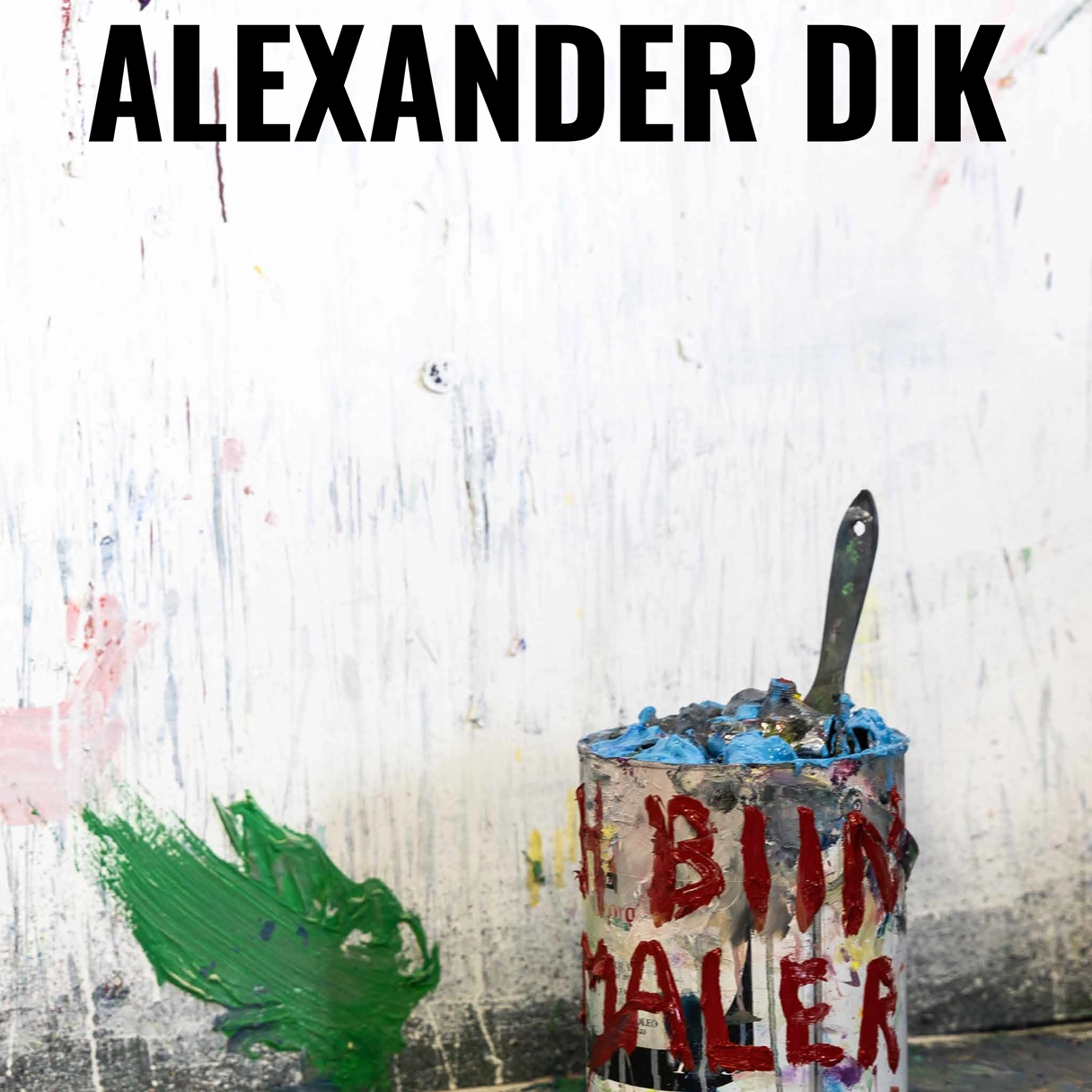“Those who don’t fight have already lost…”
Alexander Dik – Artist Profile
Born in 1983 in Kazakhstan, lives and works in Berlin.
Alexander Dik is a painter and sculptor. His work moves between figurative abstraction, physical immediacy, and social provocation. His biography is marked by rupture, struggle, and a distinct cultural heritage: Dik descends from a Volga German family that was deported to Kazakhstan by the Soviet Union during World War II. This history of displacement, dispossession, and suppressed identity continues to shape his artistic stance – not as a literal narrative, but as a persistent resistance to forgetting.
In 1992, his family migrated to Germany. Dik grew up in Berlin-Marzahn – an environment shaped by social tension, resilience, and raw urban reality. A key part of his youth was spent in martial arts: as an active Taekwondo fighter, he competed for over a decade – an education in discipline, embodiment, and inner drive that echoes in his painting today.
At the same time, he worked in his brothers’ supermarket and later became self-employed in the grocery retail sector. This direct contact with physical labor, everyday survival, and working-class experience became a lasting foundation for his art – grounded, confrontational, and unfiltered.
At age 35, Dik radically changed direction and began studying art – completing his Master’s degree in late 2024. That same year, he was named a master student under Andreas Amrhein.
During his studies, Dik developed his unmistakable visual language – expressive, physical, existential. He was particularly influenced by the legacy of German Neo-Expressionism, especially the work of Georg Baselitz. This influence was deepened through direct mentorship by Ute Wöllmann and Norbert Bisky, both former master students of Baselitz. His development was further shaped by contemporary painters such as Jonas Burgert and Christopher Lehmpfuhl, whose distinct approaches to intensity, materiality, and gesture deeply resonated with him.
Dik works exclusively with oil paint. His large-scale canvases are placed on the floor – the painting process becomes a physical act, a performative struggle using hands, feet, weight, and impulse. The portraits he creates are raw, monumental, psychologically charged. They speak of power, consumption, ambition, survival – and vulnerability.
With his series “Grosse Esser” (“Big Eaters”), Dik formulated his first major artistic position after graduation. This body of work was not only thematic, but strategic: a necessary step in establishing himself as a distinct, recognizable, and internationally relevant painter. “Grosse Esser” marks the moment where he transitioned from searching to defining – a painter with his own vocabulary, his own urgency, and his own resistance.
His paintings are often accompanied by bronze sculptures – condensed, heavy, physical echoes of his pictorial world.
⸻
Artist Statement
“My paintings are fights – not only with the world, but with myself. I use my body, because the mind often lies – the body doesn’t. The canvas is not a window to me, it’s a ring. I paint with rage, with hope, with hunger. My work happens where vulnerability meets resistance.”
Vision
Alexander Dik’s vision is to create spaces for radical honesty through painting – visual realms where emotion, vulnerability, and resistance become visible and tangible. In a world increasingly hidden behind surfaces and narratives, Dik seeks the unfiltered, the raw, and the real.
His art is not a mere depiction, but a physical process: paint is pushed, hurled, layered – until a new order emerges. Every brushstroke, every imprint tells of an inner struggle, an act of resistance against indifference and stagnation.
Dik does not aim to please – but to move, challenge, and awaken. His vision is for art to become a place where identity is not explained but experienced. A place where not answers, but friction arises.
“I believe in images that are allowed to hurt. Only where there is friction, energy can emerge.”
